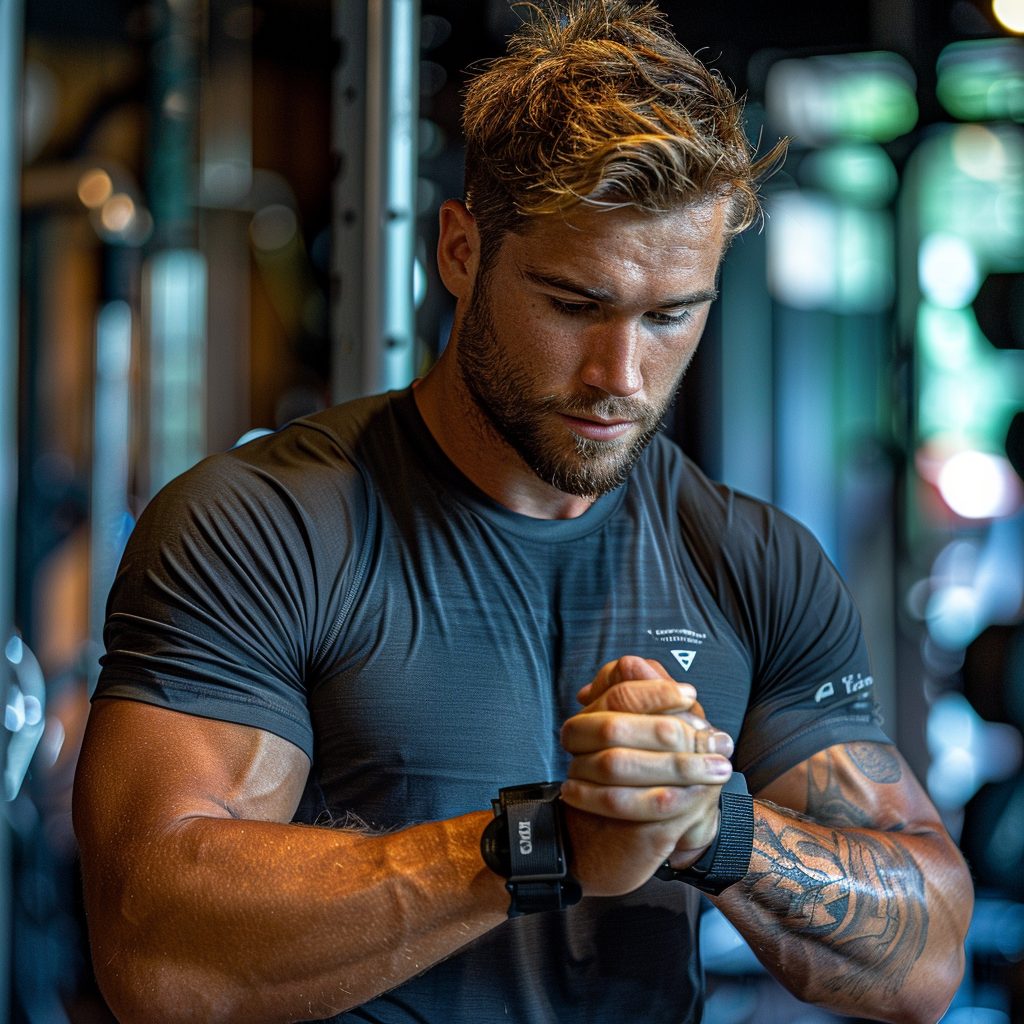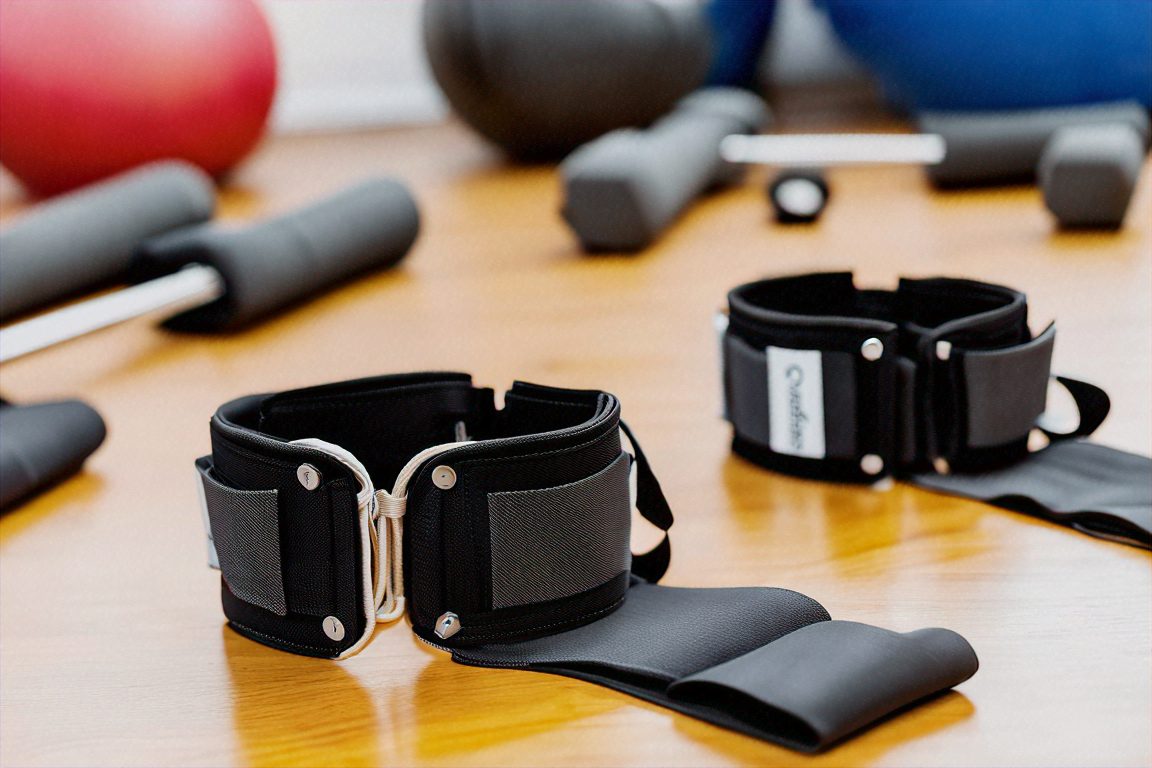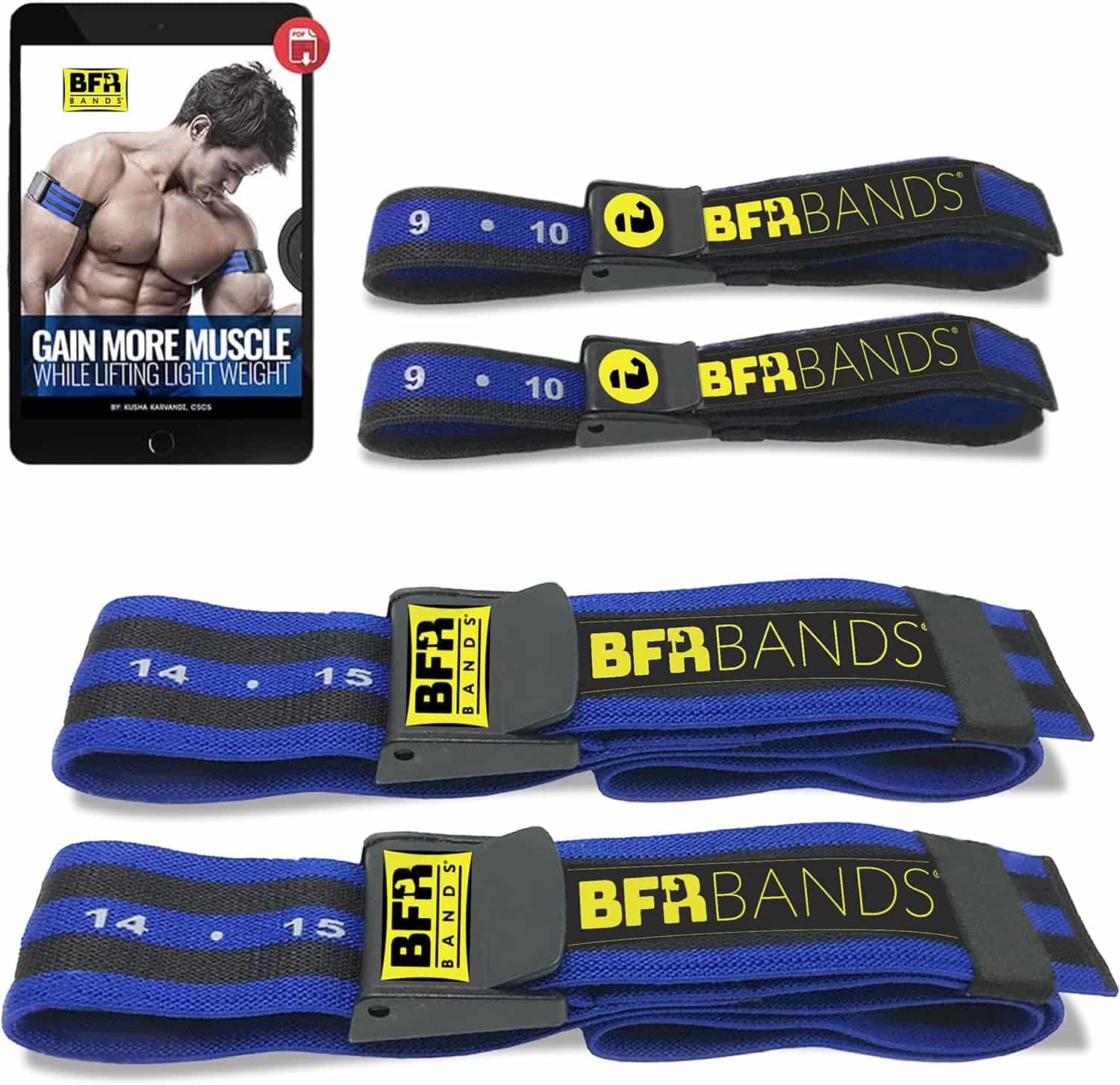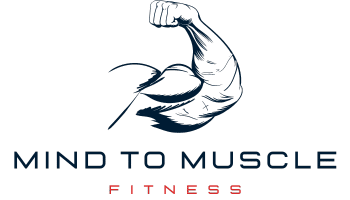
Occlusion Training: Boost Muscle Growth Safely
Blood Flow Restriction (BFR) training has changed the game for me in my search for effective ways to build muscle. The exercise world is paying close attention to this method, also known as “occlusion training,” due to its ability to safely enhance muscle growth and strength. By carefully cutting off blood flow with cuffs or tourniquets, it makes it possible for muscles to get bigger, even when they aren’t under much stress.
People who are trying to get over physical problems will benefit most from occlusion training, which is a low-intensity way to build muscle. To get stronger, you don’t always have to do a lot of heavy work.
Sometimes, coming up with new ideas is all you need. As someone interested in all aspects of fitness, it makes me happy to share what I know about how to use this exercise method safely and effectively.
Adding BFR to your workout routine could help you reach your fitness goals, whether you’re recovering from an illness or just want to get stronger.
It’s all about making the way to peak physical shape smarter, not harder.
Main Points
- Occlusion training, also known as BFR, is a powerful way to safely build muscle and improve strength.
- This method involves using cuffs or tourniquets to stop blood flow, which allows hypertrophy at lower effort levels.
- It’s a great choice for people who can’t lift heavy things or have injuries.
- When you do the BFR regularly and correctly, you can see results in muscle growth and healing.
- For best results, occlusion training requires expertise, which highlights the need for professional direction.
- To get the most out of BFR’s hypertrophic benefits, it’s important to keep the balance between workouts and rest.
- This flexible method gives people the chance to get stronger, no matter what physical limits they may have.
Understanding Occlusion Training and its Benefits
I have personally witnessed the transformative impact of occlusion training, also known as blood flow restriction (BFR) training, on muscle building and injury healing. This cutting-edge method uses the body’s natural ways of adapting, which is a whole new way to work out.
Occlusion training can help with a lot of different things, from recovering from an accident to getting ready for a big game. It gets your muscles to where you want them to be in terms of size and strength. Let’s get down to the basics of this interesting way to work out.
What is Occlusion Training?
Occlusion Training isn’t just a fitness trend; it’s a scientifically proven way to improve muscle recovery and growth by controlling blood flow. Putting on a cuff or tourniquet while you work out provides a high-reward, low-risk environment for muscle growth, even if you don’t lift heavy weights.
The Science of Muscle Hypertrophy
You may be familiar with hypertrophy, the process of muscle growth required for increased strength. To speed up this process, occlusion training works like a dream. Because of the limited blood flow, metabolites like lactic acid build up. This tells your brain to send growth hormones straight to your active, swollen muscles.
Benefits for People With Physical Limitations
Physical problems no longer hold back muscle healing. With Occlusion Training, people who are still recovering from surgeries or injuries can make great progress in their exercise routine. It is a low-impact method that should help you get stronger muscles and improve your athletic ability without putting too much stress on your weaker tissues.
Occlusion Training Techniques Explained
As you learn more about Blood Flow Restriction Training, it becomes clear that accuracy is very important. Using the right tourniquets and cuffs is very important for speeding up muscle growth without putting the body at risk. Let’s dissect this method to understand its components.

Tourniquets and Cuffs: Proper Use
Finding the right fit is the first step, whether it’s a bandage or a cuff. What is the goal? Making sure that the pressure is just right so that we can get the most out of Occlusion Training. Yes, it is both an art and a science.
Pressure and Blood Flow Dynamics During Exercise
When I work out, cuffs that are custom made for my limbs squeeze my muscles just enough to make them work harder and help them grow. This exercise method is kind of like a dance; how well you control the pressure of these machines determines the outcome of each session and, in the end, your progress toward advanced muscle strengthening and noticeable hypertrophy.
Occlusion Training Regimen for Optimal Results
As I learn more about Occlusion Training, it becomes clear that a unique touch is what makes a good routine stand out. After all, BFR thrives on customization. When it comes to building muscle or getting stronger, I’ve seen that people who get help from doctors or qualified trainers to customize their workout plan see the best results.
The goal is to find the best balance between hard work and rest. After a BFR practice, muscles need time to recover. An Occlusion Training lesson in my office usually lasts less than 30 minutes, but what matters is how often and carefully you do the exercises.
I emphasize maintaining a pace that is both manageable and responsible. Yes, this often means getting someone with experience to watch over the process.
To give you a better idea, a great Blood Flow Restriction Training experience is made up of three things: regularity, balance, and accuracy. It may seem like a lot to keep up with, but I’ve found that people who stick with it are happy not only with their progress, but also with how much they understand and respect their bodies’ rhythm and science.
Low Load Occlusion Training for Muscle Recovery and Growth
Starting a journey with Low Load Occlusion Training is like finding a secret way to improve muscle recovery and growth. As a personal trainer, I know how to use gentle but effective exercise techniques to build muscle strength through regular use.

Heavy lifting isn’t the point; the point is to master the art of subtly. For my clients, letting their muscles work and grow with less stress has been a key part of their workout plans, especially as they recover from injuries or start their fitness routine.
Implementing Low Load Workouts
Using only 20% of your maximum lifting ability and performing more reps is the best way to get your muscles stronger. The key to mastering this exercise technique is knowing when to stop and breathe in between sets. These breaks are important for getting muscles ready for the next effort, which makes them stronger.
Frequency and Duration for Muscle Recovery
Sticking to a well-thought-out plan is very important for muscle recovery. Just two or three workouts a week are enough to give muscles the time they need to recover. Over the course of about 10 weeks, this steady pace shows big changes, which shows how effective a determined fitness plan and workout routine can be.
| Week | Frequency (Per Week) | Set Count | Reps Per Set | Rest Between Sets |
|---|---|---|---|---|
| 1-2 | 2 | 3 | 15-25 | 30 seconds |
| 3-4 | 2-3 | 4 | 15-25 | 30 seconds |
| 5-10 | 3 | 4 | 20-30 | 30 seconds |
Combining aerobic exercise with occlusion training can extend your endurance.
I have been combining Occlusion Training with Aerobic Exercise to give my muscle endurance and cardiovascular fitness a boost that can’t be beat. This method changes the way cardio is done by adding Blood Flow Restriction (BFR) techniques to common exercises like walking or cycling. The combination we’re looking at here is useful—you’ll not only burn calories but also build up your endurance.
Now comes the important part: this mix is all about raising your heart rate to a certain level while you do cardio. We achieve this by employing BFR, a unique form of exercise, which triggers a response in the body that enhances endurance. Two to three times a week for ten to fifteen minutes each, these sessions can start to show results in as little as six weeks.
It’s interesting what’s going on during these workouts. Because of the limited return flow, your limbs swell with a pool of blood. This causes metabolic stress without too much mechanical stress. The idea behind this method is that you can get much better at standing for long periods of time without putting your body through the stress that regular endurance workouts can cause.
- Monday
- 10 minutes of walking at a moderate speed for BFR
- Wednesday
- 12 minutes of BFR cycling at a speed just above your comfort level.
- Friday
- 15 minutes of BFR walking with a slight increase in grade
It’s exciting to share this progress as someone who likes the finer points of exercise science. Try it out. You might find that your endurance goes through the roof without having to run or ride your bike very hard.
High-IntensityExtremely hardOcclusion Training for Athletic Performance
Those who want to improve their athletic performance should move on to high-intensity occlusion training. Sticking with it, using heavier weights, and Blood Flow Restriction (BFR) principles can work together to make big strength gains. But, as with any strong plan, you shouldn’t jump into it without a plan.
This more advanced level of BFR Training isn’t just for show; it aligns your dedication with the science of how muscles change over time. It makes sure that athletes who want to get better do work that is both smart and hard. It’s about making plans, paying attention to what your body is telling you, and carefully pushing yourself to the limit.
High-intensity uses provide health benefits for athletes.
High-intensity Occlusion training is where strength training turns into a more complex skill. Think of it as a precise tool for your athletic toolbox. If done right, it can be a fulcrum that boosts muscle growth and endurance without putting too much stress on the body. This strategic approach will help you get fitter and overcome tough opponents such as plateaus and complacency.
Imagine the raw strength of traditional strength training mixed with the clever subtlety of BFR. That is what high-intensity occlusion training is. It’s the perfect mix for success because it gets your muscles ready to grow under stress while keeping an air of elegance. This silent strength builds endurance and gets athletes ready for the challenges of competition.

Advice for professionals on how to be safe and effective
When it comes to the safety of your body, you can’t skimp on expertise. It is extremely important to work with a professional who is knowledgeable about occlusion training. They help you finetune intensities and keep an eye on your progress, making sure that your sessions not only push you but also care for your health. It is the difference between guessing and knowing, between hoping and doing well.
A good trainer uses both scientific and real-world knowledge. They guide you through the complicated world of Blood Flow Restriction Training, turning problems into checkpoints on your way to impressive athleticism. Your training goes beyond just exercise when they are in charge; it turns into a well-balanced symphony of muscle growth, fitness, and athletic performance.
Keep in mind that it’s not just working out; it’s a serious exercise technique. Let your full potential shine, but make sure you know how to do it safely. High-intensity occlusion training is waiting for you, but it will be a huge success only if you work with experts who can see things clearly.
In conclusion
In my work as a personal trainer, I’ve seen how Occlusion Training is changing the rules of Strength Training. Blood Flow Restriction Training isn’t just a fad; it’s a big change in how to get Muscle Growth and Hypertrophy. This Safe Exercise Technique demonstrates that strategic training can enhance strength in individuals, regardless of their physical limitations.
Occlusion Training supports a fitness plan that fits each person’s needs and goals, making sure that everyone can enjoy the life-changing effects of focused resistance. As long as a professional closely monitors and guides it, this method is a safe and effective way to push the limits of physical conditioning, whether for recovery or to improve at sports.
We can safely move forward in our fitness goals with discipline, hard work, and the new Occlusion Training method. It shows that we can grow muscles and get stronger in any way we want, as long as we get the right help and adapt to new situations. It’s more than just training; it’s also keeping up with science and recognizing the incredible power our bodies have.
FAQ
What is Occlusion Training?
Occlusion Training, also known as Blood Flow Restriction (BFR) Training, is an exercise technique that involves applying a tourniquet or cuff to the limbs during a workout to restrict blood flow. This method promotes muscle growth, or hypertrophy, by creating metabolic stress in the muscle, allowing for the development of muscle strength and size with lower-intensity workouts.
How does Occlusion Training lead to Muscle Hypertrophy?
The increased metabolic stress that occlusion training puts on the muscles causes them to get bigger. Muscles keep metabolic waste products like lactate by limiting venous return while maintaining arterial blood flow. This creates an anabolic environment that helps muscles grow and get stronger. This process also enhances the recruitment of fast-twitch muscle fibers, which are critical for building strength and size. To maximize these benefits, many athletes choose to cycle creatine for muscle growth, as it further supports energy production during high-intensity exercise and promotes cellular hydration. Combining occlusion training with strategic supplementation, such as creatine, can result in faster and more noticeable improvements in muscle hypertrophy and performance.
What are the Benefits of Occlusion Training for Those with Physical Limitations?
People who have physical limitations, like those who are recovering from injuries or surgeries, can benefit the most from occlusion training. By allowing muscles to grow at much lower intensities than regular strength training, it prevents overworking healing tissues. This makes it a safe way to keep or gain muscle mass while you’re recovering.
How should Tourniquets and Cuffs be used in Occlusion Training?
The right way to use tourniquets and cuffs is very important for the safety and effectiveness of occlusion training. Put them on top of the working limb and set the pressure so that it limits venous return without stopping arterial inflow. You can also change the pressure based on your own comfort and goals. It’s also important to make sure the cuff is the right width and material.
What is the role of Pressure and Blood Flow Dynamics during Occlusion Exercise?
During Occlusion Exercise, changes in blood flow and pressure are very important for making muscles tight and putting stress on the metabolism, both of which are necessary for muscle growth. Change the cuff pressure slowly to achieve the desired effect without hurting the tissue or making it uncomfortable.
What constitutes an Optimal Occlusion Training Regimen?
When you wear the occlusion cuffs, the best Occlusion Training routine usually includes a mix of low-intensity strength exercises. Most of the time, sessions should last less than 30 minutes, and the focus should be on being consistent. Healthcare professionals or certified trainers can help people make a plan that fits their needs and goals.
How are Low Load Workouts implemented in Occlusion Training?
Low Load Workouts in Occlusion Training involve performing exercises with approximately 20% of one’s maximum lifting weight, along with a higher number of repetitions. This ensures that the workouts are gentle but effective, making them suitable for muscle recovery phases and beginners to strength training.
What should be the Frequency and Duration for Muscle Recovery using Occlusion Training?
For muscle recovery using Occlusion Training, workouts should optimally be conducted 2 to 3 times a week, with a duration typically not exceeding 30 minutes per session. This frequency gives muscles enough time to rest and repair, which is critical for maximizing growth and recovery benefits.
How can you combine Aerobic Exercise with Occlusion Training?
Aerobic Exercise can be combined with Occlusion Training by performing low-intensity cardio activities, such as walking or cycling, while wearing occlusion cuffs. This can improve endurance and cardiovascular fitness, as the occlusion creates additional physiological stress despite the exercise’s low impact.
What are the benefits of High-Intensity Occlusion Training for Athletic Performance?
Occlusion with High Intensity Training improves athletic performance by lowering the risk of injury and letting athletes make big gains in strength and improve their overall sports performance through hard workouts. It requires heavier weights and focused intensity based on the athlete’s fitness level and goals.
Why is Professional Guidance important in Occlusion Training?
Professional help is very important for Occlusion Training to make sure that the right amount of pressure is used, the workout lasts the right amount of time, is intense, and is done correctly. To safely get the most out of Occlusion Training for muscle growth and strength, experts can help you make a personalized plan, keep an eye on your progress, and avoid getting hurt.



